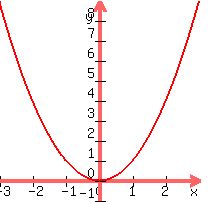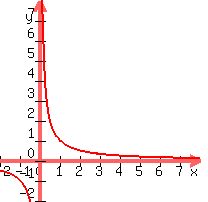Question 805752: Determine which function(s) below have an inverse f^(-1). Can you please explain to me why?
(I) f(x)=x^2-2x (II) f(x)=1/x (III) f(x)=cos x (IV) f(x)=sin x,-π/2≤x≤π/2
(A) I & II
(B) I, II, & III
(C) II, III, & IV
(D) II & IV
(E) none of the above
Answer by KMST(5328)   (Show Source): (Show Source):
You can put this solution on YOUR website! A relation between x and y establishes y as a function of x if for each x we find no more that one y paired to that x.
It could be that y is a function of x that happens to assign the same value of y to more than one x.
 is an example. is an example. 
Each x has one and only one  , ,
but the same y value can be the y for more than one x,
for example  is the y for is the y for  and for and for  . .
In that case, we cannot reverse the function and sat that x is established as a function of y, because for y=4 we find two corresponding values of x.
If there is just one x (or less) for each y, then we can solve for x and find the reverse function.
(I)  
 so so  and and  have the same have the same  ----> There is no inverse function ----> There is no inverse function
(II)  can be written as can be written as  
Exchanging the places of the variables we get  --> --> 
So  or or  is the inverse function of is the inverse function of 
That function has an inverse, and is its own inverse.
(III)  
We know that cosine is a periodic function with period  so the of so the of  repeat at repeat at  intervals so that intervals so that   so we would not know what value of x to assign to y=1. so we would not know what value of x to assign to y=1.
 does not have an inverse function does not have an inverse function
(IV)  , ,  has a restricted range. has a restricted range.
 and as x increases and as x increases  increases, all the way to increases, all the way to  , without repeating any values. , without repeating any values.
For  the values of the values of  decrease from 1 all the way to -1, repeating values already found for decrease from 1 all the way to -1, repeating values already found for  in the in the  interval. interval.
However, with  defined as defined as  only in the restricted domain only in the restricted domain  , ,
each x corresponds to one and only one y, and vice versa.
The function has an inverse.
So the answer is  II and IV only II and IV only
|
|
|